Koanga in the Maara
Kōwhai are flowering! Plum and peach are blossoming at home, and citrus are pumping. I love this time of the year in the maara kai, at home and at Māoriland. Our Māoriland seedlings and onions are growing, strawberries are blossoming, and bees are buzzing madly around the rosemary. Cuttings of sage, geranium and rosemary simply want to grow. Early spring feels like a lift …all this lively maara action and the lengthening days with the hope of summer and bumper crops! Leafy greens, kale, silverbeet, cauliflower, sprouting broccoli, spinach, chard and lettuce are ready to eat in the Māoriland Maara. For the flavour brave red coral mizuna, celeriac and sorrel are tasty additions to chop into salad… strong and contrasting flavours to savour.
I was talking to a Dad at the Kaibosh tēpu, who is blending kale into banana green smoothies for his tamariki. What a great way to get awesome nutrition into your whanau, whanau!
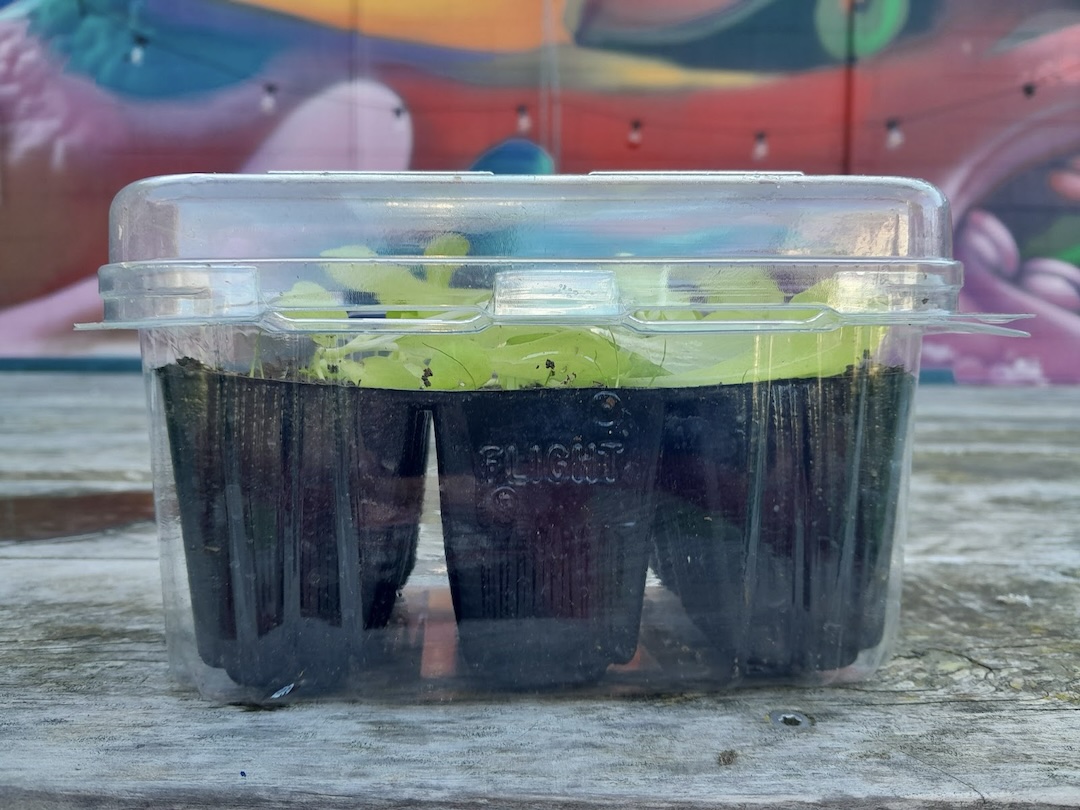


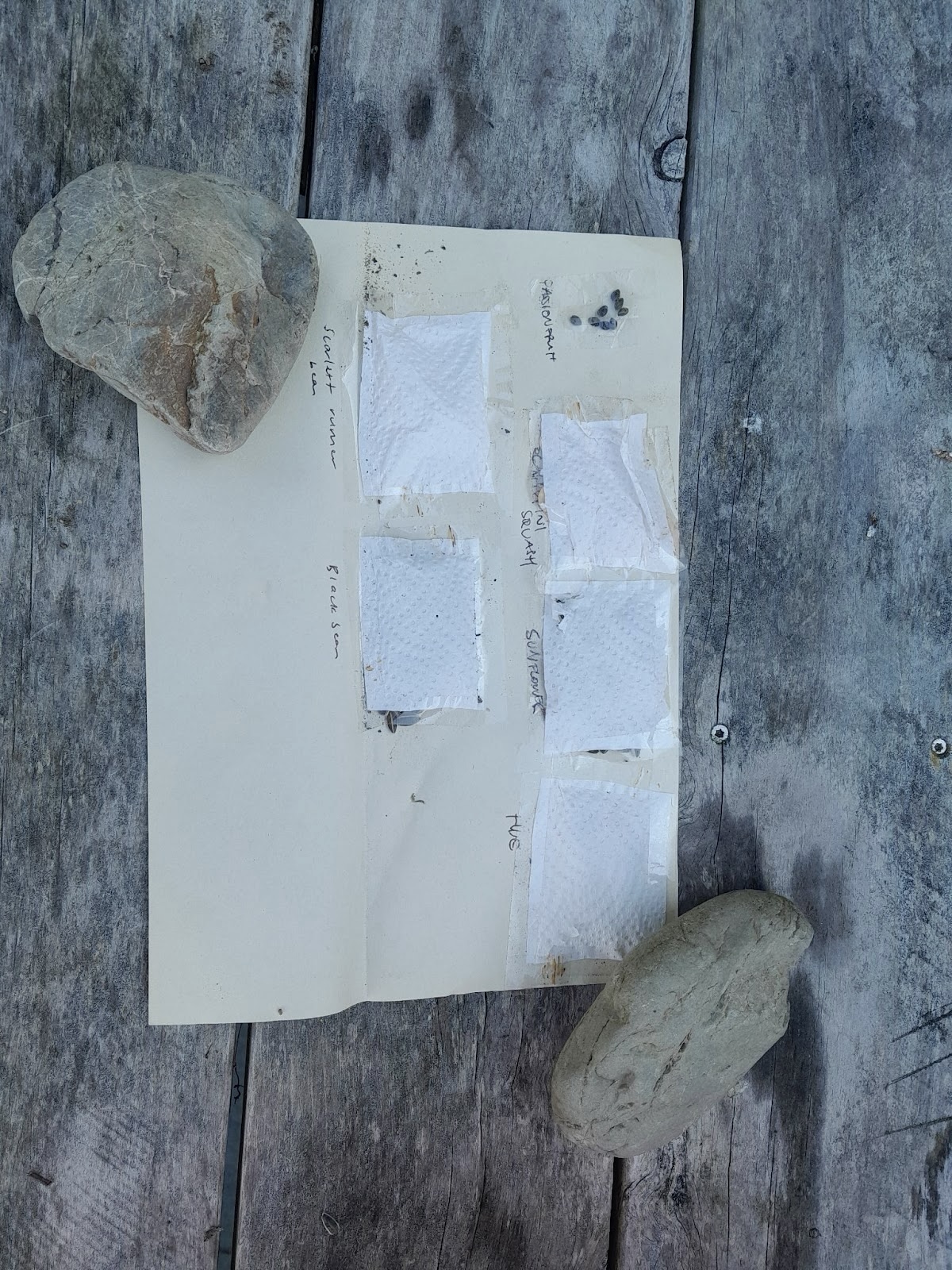
Jenny’s Seed-Raising Tips:
- Recycling plastic fruit containers acts to retain moisture like a mini hot-house. Soil should be pre-watered and moist, but not wet for planting seeds. In a re-use fruit container hot-house, the seeds can be planted in pre-watered soil and left a few days without needing more water.
- Water from Below. Jenny used a plug tray (I only had an ordinary seed raising tray, as pictured) raised (by polystyrene) on a small towel. Water in the container below – this is absorbed by towel fabric. Water will then travel to seeds and pēpē plants from below, rather than watering from above, which in warmer conditions frequently causes seed rot. Extra water is poured into the large tray to travel up to the seeds as needed.
- Also from the seed swap…Nifty seed storage, I am not sure who should be credited with this clever seed storage, perfect for a share and swap!
Kaibosh Update
As a part of our para kore (waste minimisation) and community care strategy, we collect food industry surplus kai from Kaibosh, and this free food can be found at the front of our Toi Matarau gallery, usually on a Tuesday or a Wednesday, sometimes Thursday. Times and days are variable as we have found an unpredictable timetable reaches a wider group of our community, and makes it less stressful time to facilitate. Please take kai you can use and remember to leave some for others too.
Our seed swap, share, and sow was a pleasant evening hearing from locals Jonathan Mines from Crooked Vege and Rosa Yates who delivers a Papa Taiao curriculum at Ōtaki College. Such cool mahi going on in our town!
Jenny Potaka shared top tips for seed raising. Jenny is a very experienced horticulturalist and educator who owns Trinity Farm. Trinity Farm shares its beautiful land to enable Crooked Vege’s Community Sponsored Agriculture to happen right here in Ōtaki.

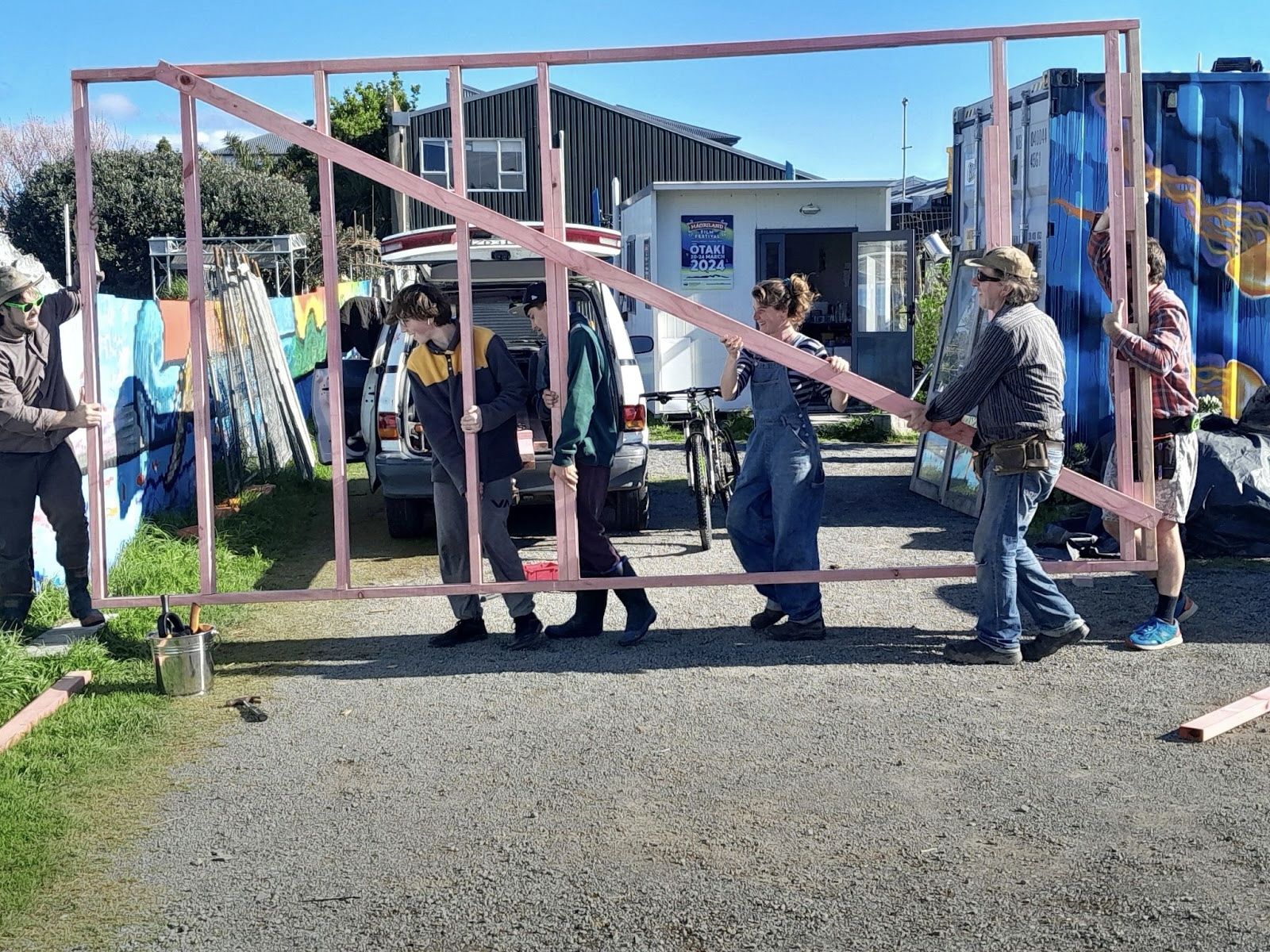
Housing
Thanks to the kind people of Kelly & Co. and Zero Waste Ōtaki for their support. We have appreciated these sponsors supporting our response to current housing needs.
We are running a series of small ‘learn building skills’ workshops in the Māoriland paddock, and in the process providing a whanau with a whare iti, accessory housing, to accommodate extras.
The end result will be not only accessory housing to accommodate someone in need, but also skilling up a small group of people in our community who want to build more, for whanau/ friends, or to get out of the rental trap. Whanau housing whanau/ friends can happen, especially when we have some skills and some confidence to build extra accommodation!
Strawberry Patch Decoys
I am taking a leaf out of my friend Jo’s book, and painting strawberry-sized stones bright red. These act as a bird decoy, which also serve to teach nga manu ‘kaua e reka’ (‘not yummy’) … Jo maintains she only lost a couple of strawberries to the birds last year… the blackbirds had a ball feasting in my patch! This year Friday morning Mahi Maara volunteers Jaque and Al have spent several Friday mornings assisting me to free the strawbs from our paddock grasses and apply cocoa husk mulch. The stone decoys will be an interesting experiment. Hoping for more than one happy toddler exploring the strawberry patch.
Composting
Around the time of Matariki I accepted the job of composting a load of chipped PLA single use ipu/ kai containers, with the plan to return them to Papatūānuku through our compost system. These initially appeared to have a faster breakdown than the sawdust. Now the soil/compost is a bit more sour than usual. On reflecting I think our overall results are better with the sawdust/chip donated by Kāpiti Firewood. On turning the compost this week I also found some very intact post festival ‘compostable’ cups, confirming my conviction that reusable crockery is a better resource for festivals, saving a large amount of ‘single use’ resource production waste, and reluctant compost breakdown!
In August, I loved these fungi that turn up annually, and were photographed by our friend Waiongona last year. This year these fungi were very abundant this year. Perhaps they like PLA more than I do!
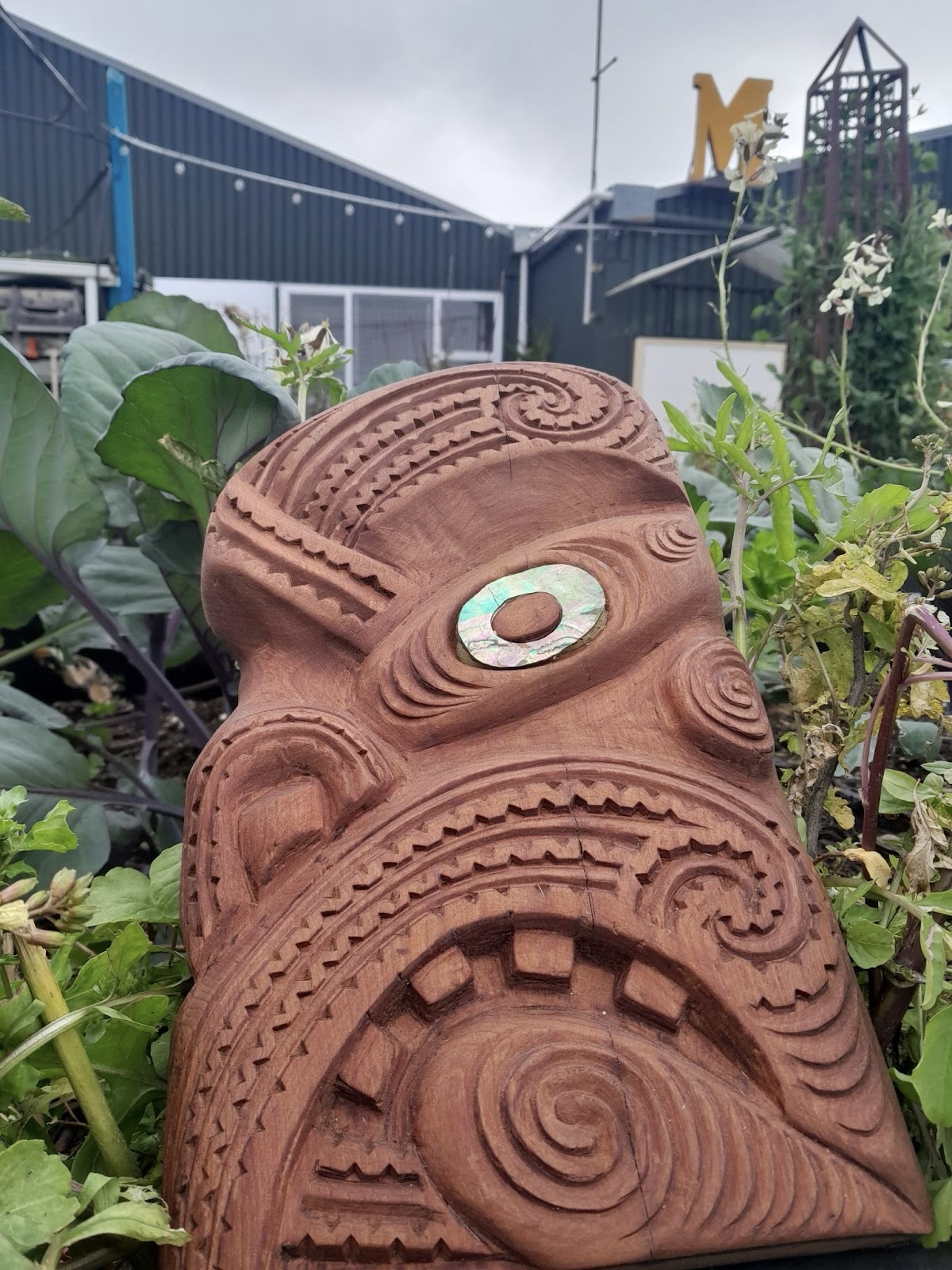
Rongo-mā-Tane
Carved by Clara Hakaraia, Rong-ma-Tane is the Atua of cultivated plants (eg. kūmara), crops, agriculture, peace/war (depending on where you come from), abundance, wealth and prosperity
Rongo-ma-Tane and Haumia (Atua of wild foods) took refuge with Papatūānuku in the separation of Ranginui. To Clara this indicates a peaceful stance, and earth connection.
We plan on building a pātaka for Rongo-ma-Tane, to protect him, as he is so ataahua, and will give him a spot with a view, overlooking the maara! Thanks to Clara for her beautiful mahi and generosity to our maara space.
If you feel like getting out into a maara kai this koanga, you are always welcome to come join us Friday mornings at 11 Raukawa street to help keep the maara ticking over, producing kai to share!
